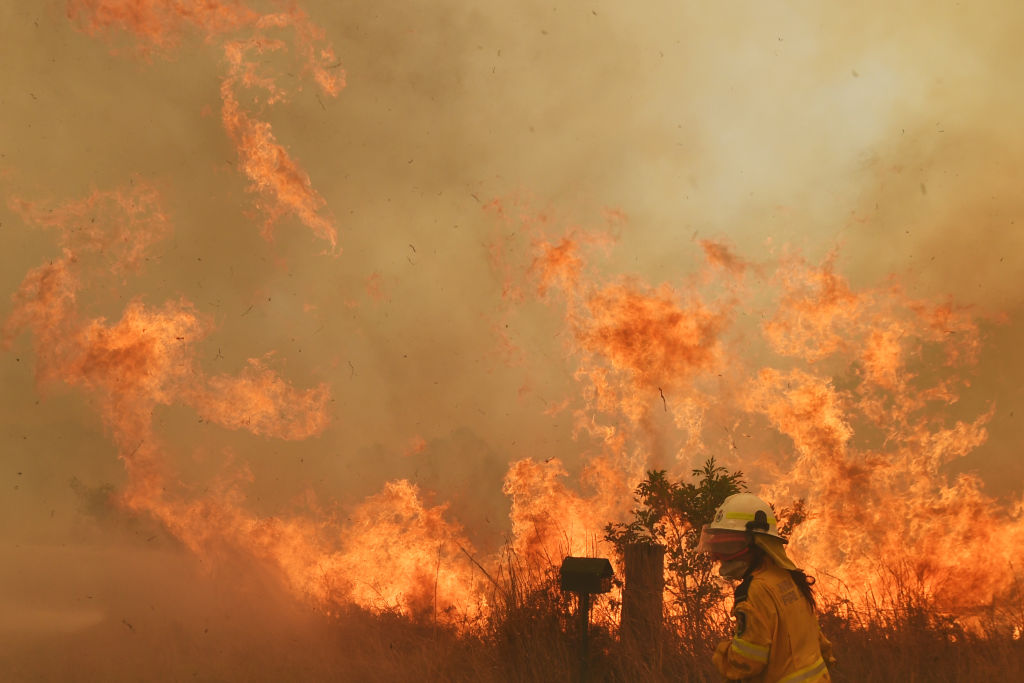
It’s time to structure the Australian Defence Force for this long, hot century. That doesn’t mean making it better suited to engaging in offshore climate-change-related activities, as the 2016 defence white paper discusses. Instead, it’s about considering changes to the ADF to better address domestic climate-change-related events.
While that work may seem to be included in the traditional role of providing military aid to the civil power, the unique nature of global warming calls for a defence strategy rethink. The strategic review Defence has just embarked on is a good place to start this process.
Defence’s core business is defending against external threats. Global warming is 99% an externally generated threat (less Australia’s 1% ‘enemy within’ contribution). Half the world’s carbon emissions are
from three countries: China (29%), the United States (16%) and India (7%). These three great powers didn’t intentionally set out to weaponise greenhouse-gas emissions. They strove for ever-larger national power; global warming is just a by-product. Australia is simply collateral damage in the three countries’ quests for greatness.
In quantitative terms, today’s Australia is
about 1.1°C hotter than it was last century. The temperature is
rising by about 0.2°C every five years. Considered in current defence planning terms, in 2032 when the navy’s first new submarine is set to begin sea trials, Australia will be about 1.6°C hotter. When the 12th and final boat sets sail in 2052, Australia will be about 2.8°C warmer. If countries stick to the Paris Agreement, the temperature should then plateau at
around 3.2°C hotter sometime later.
The rate of change may vary. It could happen quicker if tipping points are reached. Conversely, sudden action may arrest the rise, making for a lower temperature plateau. But when it plateaus, the temperature will remain elevated for some
hundreds of years. It won’t be as cool as it has been this summer for a very long time.
In human terms, Australia is facing a never-ending external threat. Current ad hoc solutions seem inappropriate. Moreover, there’s a clear need for an Australian sovereign approach that doesn’t depend on others. An example of the dangers of short-term ad hocery is becoming evident in our reliance on contracting American firefighting aircraft. With major fires now happening year-round both here and in North America, Australia risks being without firefighting aircraft in times of dire need.
The nature of this external threat further shapes the strategy. A sensible defence strategy might be a risk-management one that tries to limit the damage global warming causes to an acceptable amount. Governments can then fund defence as necessary to meet what they consider acceptable damage.
If the threat’s nature and duration are defined, a strategy is evident and funding levels are set, the next step is to secure the means. The ADF would need to be expanded, properly equipped and trained for the role and then maintained into the indefinite future.
In September it was reported that ADF chief Angus Campbell said responding to recent flood and cyclone disasters took
about 1,000 to 3,000 defence personnel. The ongoing bushfires are similarly involving hundreds of ADF personnel. Since the ambition is to limit damage—rather than clean up after an event—an additional 3,000 personnel might be prudent.
This would probably be mainly an army-led development, given the many extant land-force abilities that appear useful. However, the personnel involved would require specialist skills and a training system would need to be established. And with events now happening almost continuously across Australia, additional personnel would be needed to allow staff rotation. So the army would need about an extra 5,000 personnel.
The air force could also expand to provide a sovereign aerial firefighting capability. Today some
160 contracted civilian aircraft are involved in fighting bushfires, many hired from offshore companies. The National Aerial Firefighting Centre manages that equipment with funding from state, territory and federal governments. As an indicator of the scope of the requirement, Victoria considers that it alone needs a
surge capacity of 150 aircraft. Given the real worries about future availability of firefighting aircraft, individual states are now acquiring their own. New South Wales is
buying a Boeing 737 firefighting-modified airliner to operate from Richmond air force base.
Firefighting aircraft is clearly an area for a national response not individual state penny-packeting. A national fleet would gain large economies of scale in terms of cost, staffing and training systems. The very long-term requirement means it’s most cost-effective to fund an enduring and expandable national capability. The air force appears the logical organisation.
Defence could also contribute in other areas, including aerial surveillance using small and large drones, air-traffic management in fire zones, and geospatial service provision, as the EU’s Copernicus space-based system has done.
If this build-up started now, it could be in place by the first submarine sea trial in 2032, when Australia has reached +1.6°C and conditions are about 50% worse than today. By 2052, conditions might be almost three times as bad. Defence’s professional force could then supplement the large numbers of volunteer ‘citizen-soldiers’ already deployed on the front lines. The year 2032 might seem distant, but remember this is a forever war.
It may seem unusual to call for the ADF to play an important role in limiting global warming damage, but countering external threats is Defence’s core business. Australia’s current approach developed from methods used last century for periodic natural disasters. The global warming threat is very different in scale, intensity, frequency, nationwide coverage and duration. It’s time for Defence to join the fight.
 Print This Post
Print This Post